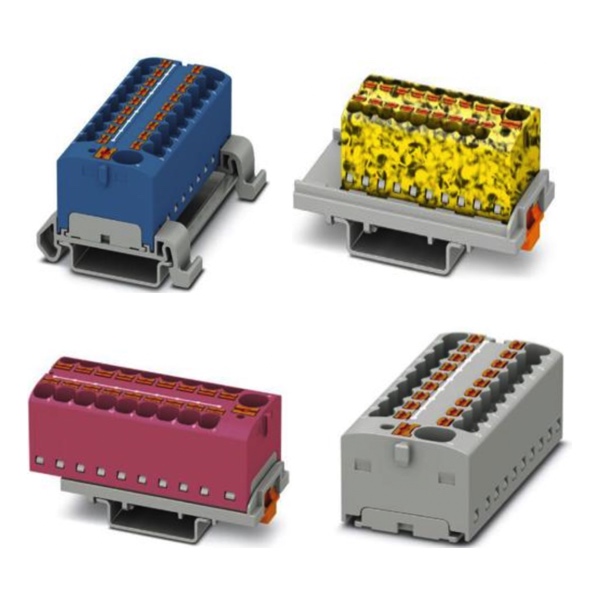Distribution Terminal Blocks

RSP Supply carries a complete line of distribution terminal blocks designed for reliable, organized, and space-saving power distribution within control panels and enclosures. These compact components play a vital role in electrical systems by channeling power from a single input source to multiple output circuits. Distribution terminal blocks ensure clean, safe, and efficient power routing, supporting critical applications in automation, process control, and industrial machinery.
At their core, distribution terminal blocks consist of three main parts: the input connector, the block itself, and multiple output points that send power to various devices or system components. This modular design enables simplified wiring, quick installation, and easy maintenance in complex control or automation panels.
RSP Supply offers distribution terminal blocks suitable for DIN rail or panel mount configurations, allowing flexibility for both compact and large-scale systems. Connection methods include screw clamp and push-in technology, offering either tool-assisted or tool-free operation for secure, vibration-resistant wiring. Power distribution blocks are engineered to manage high current loads safely; making them ideal for applications requiring multiple load connections from a single source.
Many distribution terminal blocks come color-coded for easy identification of connections; such as blue for neutral conductors or green/yellow for ground. These blocks are modular, stackable, and easily expandable, allowing system builders to customize layouts as needed. Their robust construction ensures long-lasting performance in demanding industrial environments such as motor control centers, automation systems, and distribution panels.
FAQs
Q: What is the function of a distribution terminal block?
A distribution terminal block routes electrical power from one input to multiple outputs, simplifying wiring and ensuring organized, efficient power distribution within control systems.
Q: What makes phase distribution blocks well-suited for compact control panels?
Their slim, space-efficient design allows multiple conductors to be enclosed in a small space while maintaining finger-safe protection and high short-circuit ratings. Modular bridging options support flexible expansion without increasing cabinet complexity.
Q: What mounting options are available?
Distribution terminal blocks can be installed on DIN rails or mounted directly to panels, providing flexibility for different application requirements.
Q: What types of connections do distribution terminal blocks use?
They typically use screw clamp or push-in connections. Screw types offer secure fastening with tools, while push-in connections allow fast, tool-free wiring.
Q: Where are distribution terminal blocks used?
They are commonly used in motor control centers, distribution panels, building automation, and industrial equipment to manage power distribution efficiently and safely.
Why Buy Distribution Terminal Blocks from RSP Supply
RSP Supply offers a wide range of high-quality distribution terminal blocks from trusted brands, available with fast shipping and expert support. Whether you need DIN rail-mounted solutions for compact panels or panel-mount configurations for heavy-duty power distribution, RSP Supply delivers dependable products built for industrial performance.

